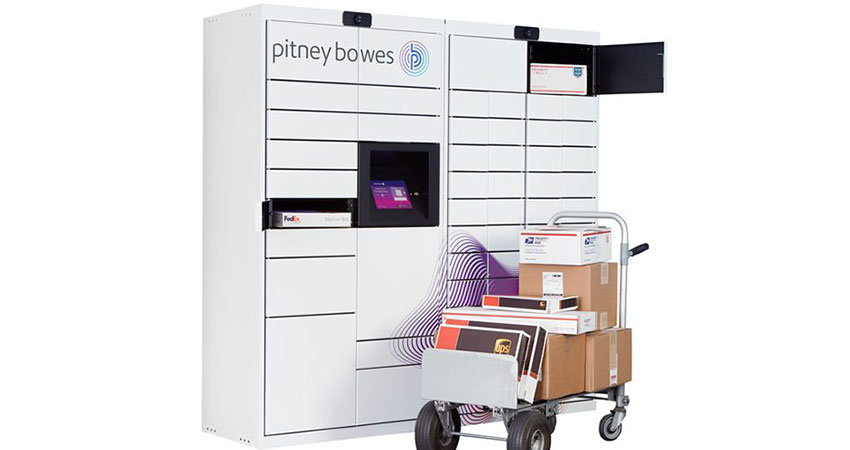Pitney Bowes is rolling out a new series of smart lockers that can be used either in office or apartment buildings, college campuses or retail stores that can be configured to use as parcel boxes for individuals to send and receive items, or for picking up ecommerce orders and processing returns.
Kerry Caylor, vice president of Pitney Bowe’s SendTech parcel and locker innovation division, said the company projects the global smart locker market is expected to hit $1.4 billion by 2027, and that global parcel volume will exceed 200 billion by 2025.
Caylor said Pitney Bowes will be doing a pilot program with a major retailer in the coming months. The way it works is, a customer weighs and dimensions their package on a scale, selects the shipping service they want, chooses the appropriate locker, and the locker communicates to the carrier there is a package to be picked up for delivery.
“In retail, companies are concerned with making a large capital investment in lockers based on a moment in time, because of the rapidly changing nature of the customer experience that can render it obsolete very quickly,” he said. “They’re looking for variability, similar to smart phones or tablets. The design of Parcel Point is focused on flexibility and extensibility, not just for a single use case like BOPIS or grocery.”
He said Pitney Bowes reviewed feedback from 200 clients in developing Parcel Point, which influenced the design and fact that it needed to be turnkey, and delivered fast. “Over 20% of the respondents emphasized they had purchased lockers previously but were disappointed post sale based on service or adaptability,” Caylor said. “We can install these systems in a matter of weeks.”
Many large retailers are focused on creating value-added services and enhancing the overall store experience to bring back shoppers who may be wary of brick-and-mortar in the post-pandemic period. Adding the convenience of smart lockers could be one way to do so.
Smart lockers have been rolled out by a few retailers like Home Depot and Lowe’s for handling ecommerce orders, where shoppers can choose that pickup option, but it hasn’t been widespread as of yet. To date, hhey have been adopted much more broadly in Europe and Asia than the U.S.

